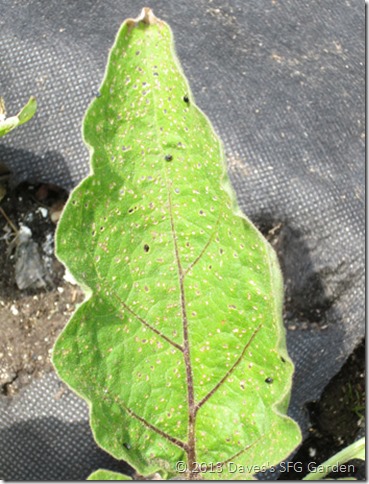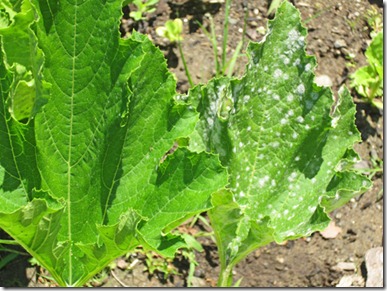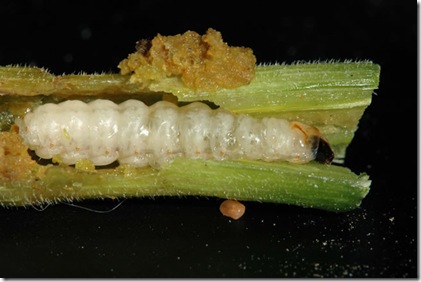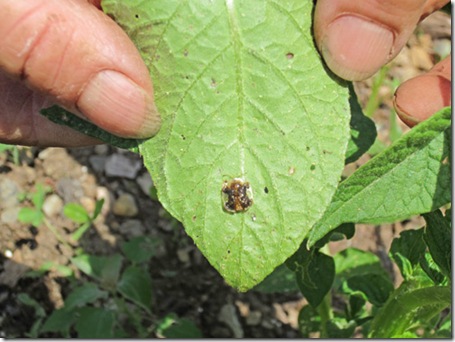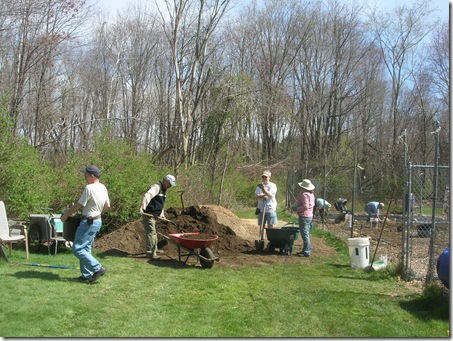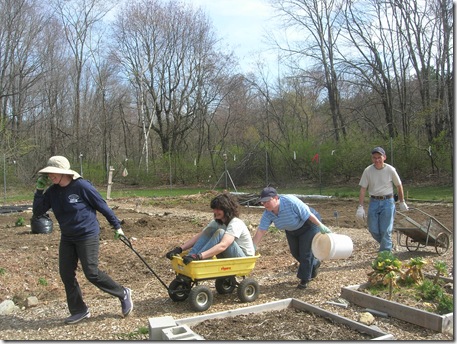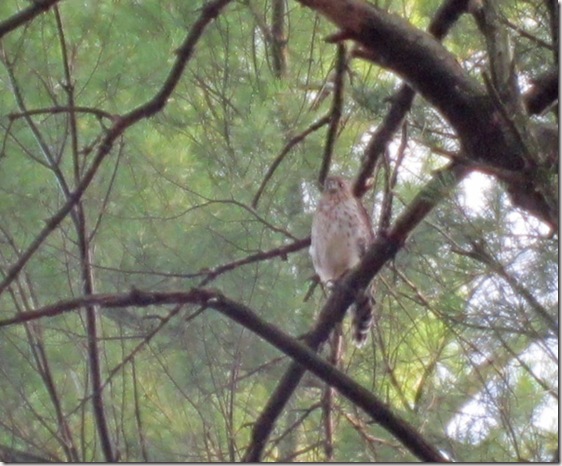A few years ago, the flea beetles were a curiosity in the community garden. I noticed a few shot holes in my eggplant. which were waist high at the time and not really bothered by the beetles. But every year since then the beetles have increased their numbers and their appetites. It has gotten so bad that I cannot grow eggplant at all and the quality of many of my Cole crops is affected. I’m pissed off and I declared war on the flea beetles this year, which is kind of ridiculous considering how tiny they are. Flea beetles are nasty and really hard to control, so I only used the term management in my title, but here is what I am trying.
First, you have to understand the enemy. Flea beetles winter over as adults in the soil, usually in wooded areas near the field or your garden. They emerge in spring as soon as temperatures get to 40F and go looking for breakfast. There are as many as 3-4 generations a year and adults can live up to 2 months, so that's a lot of munching. In my area, flea beetles are present up to frost and beyond. The larvae live in the soil and feed on the roots of the plant before emerging as adults. Usually the damage to roots is minimal except in the case of the potato flea beetle, where the larva can significantly damage the crop.
There are many kinds of flea beetles and they usually feed on one type of plant. In my garden the two biggest pests are probably (I'm not an entomologist) the crucifer flea beetle (Phyllotreta crucifera) that feeds on brassicas, and the eggplant flea beetle (Epitrix fuscula) that feeds on solanaceous plants (tomatoes, peppers, but mostly eggplant). Whatever type of flea beetle, the adults feed on the leaves of the plant, chewing tiny holes all over the leaf (an effect called shot holing, looking like the leaf has been hit with shotgun pellets)
Row cover works if you put it on early enough and seal the edges very well. That's assuming the beetles didn't overwinter in the soil under the covers. I tried covering my eggplants last year (in brand new Mel’s Mix so no eggs) but they still got in. And they eventually killed all my eggplants, even the ones with 4-5 leaves, so much for that theory.
You can try physically removing the beetles. Last year, each visit to the garden started with an examination of the eggplants and brassicas to pick and kill flea beetles. They are tiny, hard-bodied beetles and hard to catch and squish. I find it more effective to use my thumb to trap them and then, with my fingers under the leaf, roll the beetle to the edge of the leaf. If the beetle hasn’t disintegrated by then,you can roll them between your thumb and finger until they do. A trick I haven't tried yet is to use a hand-held vacuum (dustbuster) to vacuum up the beetles. This sounds tedious but my theory is every beetle you destroy is one less beetle laying eggs and multiplying.
Trap crops properly done probably work for farmers who, say, surround their field of broccoli with a 4-foot band of mustard. The beetles flying out from the woods land on the mustard, and the farmer then heavily sprays the trap crop with insecticide. I don't believe planting some radishes next to your broccoli is going to lure the beetles away. In fact I know it won't, because the radishes I have near the broccoli are ones I actually want to eat, and both the radishes and the broccoli are being chewed up. And I guarantee you planting radishes near your eggplant is not going to lure eggplant beetles away. The beetles you see on the radishes are crucifer beetles, not eggplant beetles, and are now ready to move on to the main course, your brassicas. And obviously, garden areas should be kept free of weeds where beetles can shelter and feed, particularly weeds in the mustard and solanaceous families (and I include volunteers in the category of weeds).
You can try dusting the leaves with DE (diatomaceous earth), which either irritates them or slashes their little bodies. I haven't found this very effective but you can give it a try. I have also used a garlic chili spray, which seems to repel (but not kill) them for about a day. I make the spray by putting 2-3 cloves of garlic and a chili in a food processor with a cup of water. Puree then let steep for a day. Strain into a quart spray bottle, add a few drops of dish soap, and dilute with water to a quart.
If you are willing to use organic sprays, pyrethrin sprays are moderately effective but short lived. They degrade quickly with exposure to sunlight. Look for a spray that has an OMRI label and is not mixed with piperonyl butoxide, which makes it unsuitable for organic gardens. Also avoid spraying it when pollinators are active in the area.
A new and better substance is spinosad, an organic insecticide produced by fermentation with a common soil bacteria. Spinosad is a stomach/nerve poison and has to be ingested, so it is safe for beneficial insects, earthworms, and pollinators as long as it dries before contact. It can be used up to day of harvest. Flea beetles were recently added to the insects it will control and in tests it is more effective than pyrethrin and persists longer. In addition, it will also control cabbage loopers and caterpillars, so you get a two-fer when you spray your brassicas. It also controls leaf miners and will penetrate and kill the maggots inside the leaf. I sprayed my brassicas and observation the next day showed only a few flea beetles present. I also bought some pyrethrin spray and plan to try alternating spinosad and pyrethrin through the season so resistance does not build up.
Another product used by commercial growers is Surround WP, a kaolin clay compound that coats the leaves and acts as a repellant and protectant. When mixed with water, transplants can be dipped in a bucket of it before setting them in the ground. Rain will eventually wash it off so you have to spray to reapply it. And it will discolor fruit like eggplant so it can’t be used after fruit has set. For flea beetles it was not as effective as spinosad but works well on other pests.
Hopefully, you don’t even know what a flea beetle is. But if you have them, good luck in managing them. If you have other techniques that work, I would be interested in what you have done.
